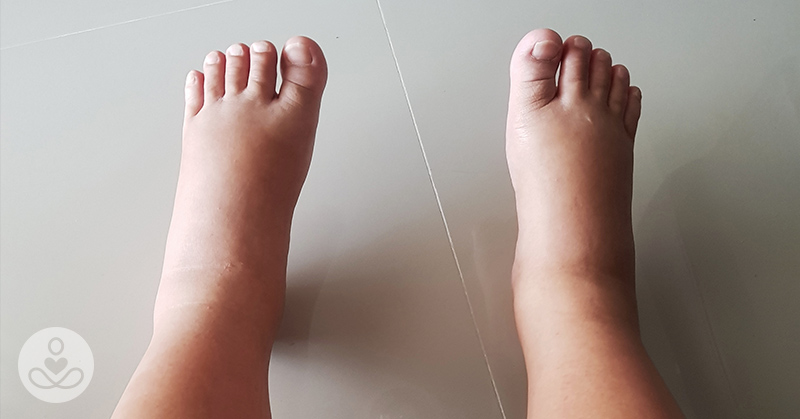When you try on shoes you haven’t worn in ages, you might notice they suddenly don’t fit. Your ankles and calves, which were once slender, are swelling like balloons. Whether the feet are hurting or not, they’re uncomfortable, especially when the only footwear that fits are flip flops and slippers. This swelling could be from a long day in heels or shoes half a size too small, but they could be a symptom of something else. As Britt H. Tonnessen, MD, Yale Medicine vascular surgeon, says, “There are probably 50 different things that can cause feet, ankles, and legs to swell.” Feet and legs are more likely to swell than any other part of the body, because gravity naturally draws bodily fluids to the lower extremities. [1] “I tell my patients, if you were on the moon, you wouldn’t notice it happening as much!” explains Dr. Tonnessen.
The body has two drainage systems:
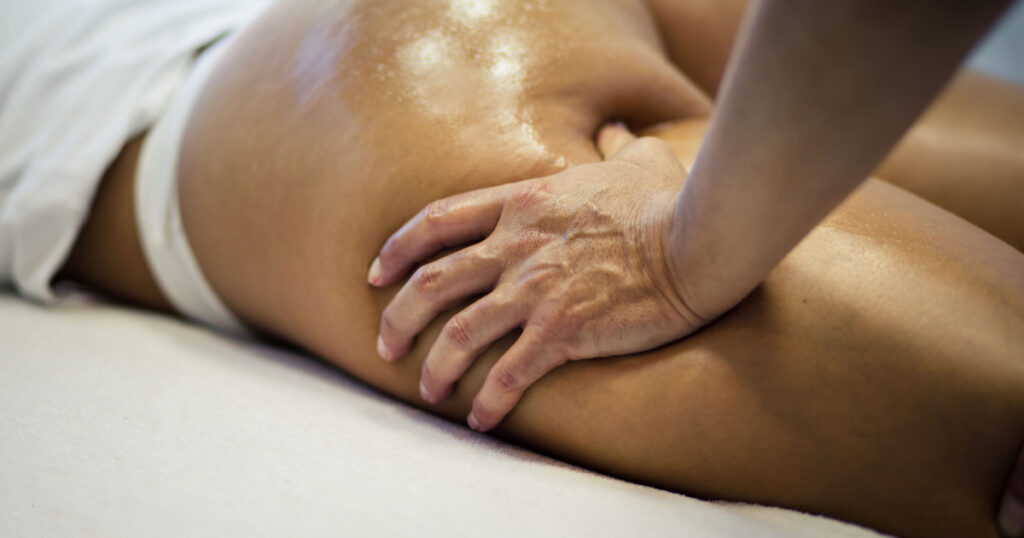
The veins, which brings blood from the legs back to the heart, and the lymphatics, which are tiny channels that move liquids around the body These two systems work together against gravity to prevent fluids from pooling into the legs. When something goes wrong and the fluid remains puddled in the feet, ankles, or legs, this causes a form of swelling called edema. [2] “If there’s just a little swelling at the end of the day, that’s very common and probably nothing serious,” Dr. Tonnessen says, “but if it’s starting to progress, where you’re noticing there’s more swelling after a few weeks or months, if the swelling is only in one foot or leg rather than both, or if there’s any association with shortness of breath, you should see a doctor.
Read More: Woman’s hips are crushed in a crash after she propped her feet up on the dashboard
10 Reasons for Swollen Feet
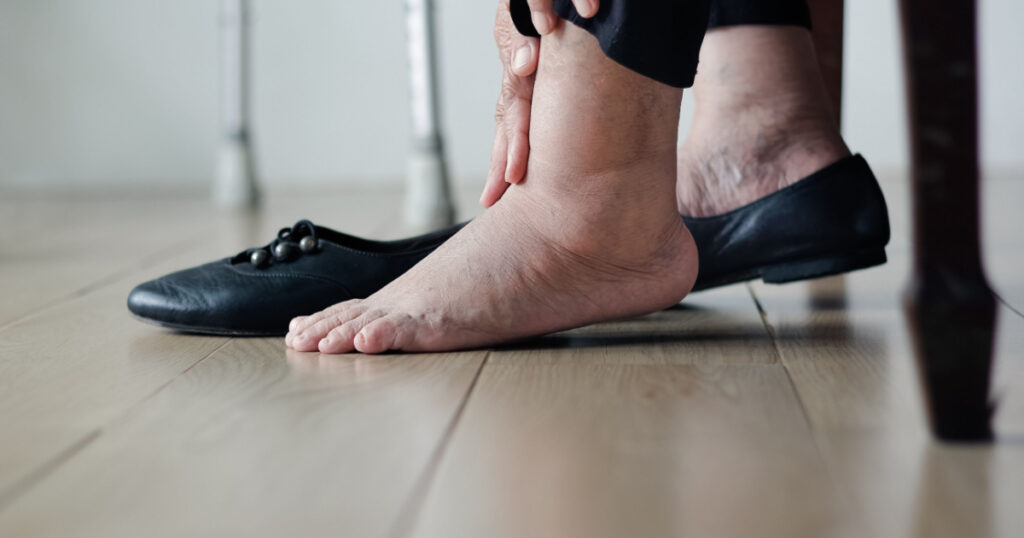
I you have been experiencing swollen feet, one of these 10 reasons could be why.
You’ve been on or off your feet all day.
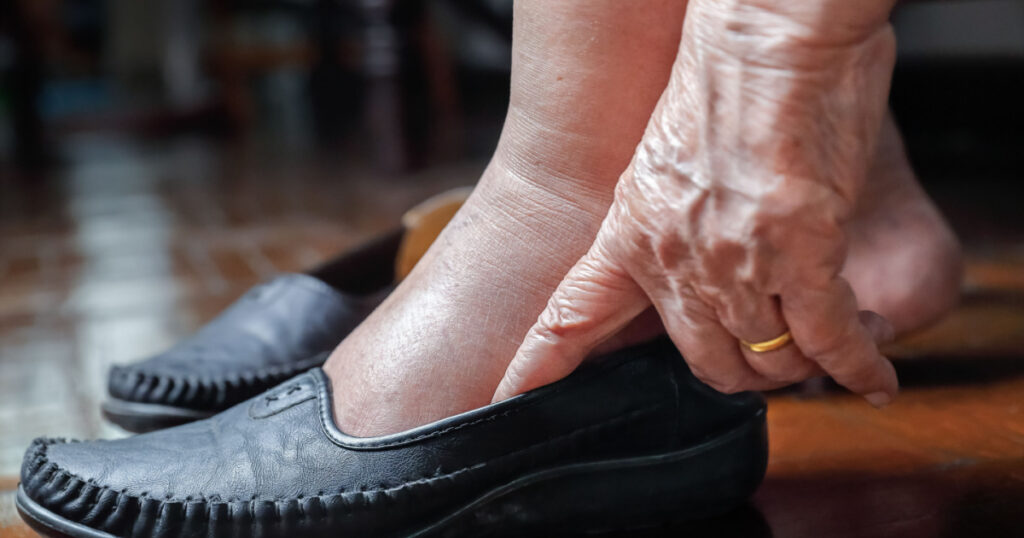
Maybe your job keeps you on your toes, you had a busy day running errands, or perhaps you took a long tour through a new city. Whatever the case may be, it can leave you with sore and puffy feet. Conversely, being off your feet can create a similar effect. If you spent the day sitting due to an injury or a new job, you may suffer from dependent edema, which is caused by gravity. Luckily, this condition can be treated by simply propping up your feet on a pillow at the end of the day. Compression socks are another good option and recommended by Dr. Tonnessen. “They go from the foot to the knee and are a little snugger on the foot and ankle to prevent the accumulation of fluid,” she says. [4]
Too much salt
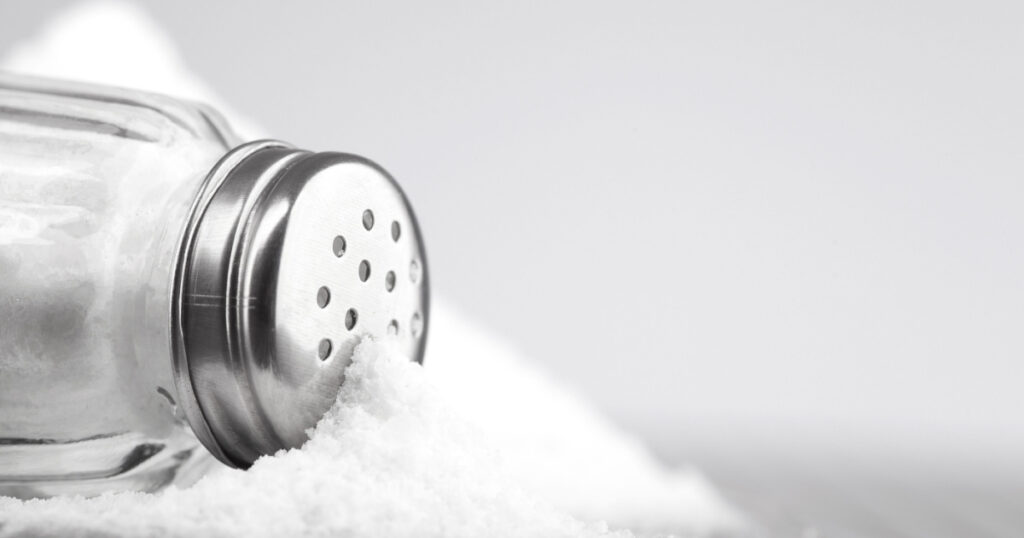
French fries, pickles, chips, and pretzels are delicious, but consuming too much sodium can cause water retention, which results in swelling and puffiness. “I advise my patients to really look at labels of all their food,” says Dr. Tonnessen, “to see how much sodium is in their diet soda, canned soups, microwave dinners, and to consume no more than 2,000 to 2,400 milligrams per day.” [5] Making sure you get adequate potassium in your diet is also an important factor to consider.
Injuries
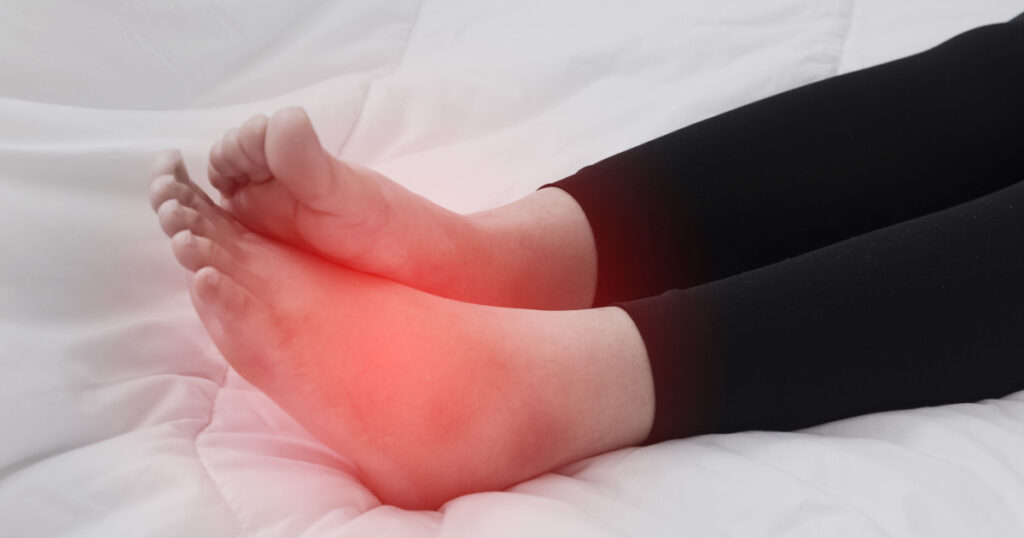
Swelling can also be a result of inflammation from a fracture or tendonitis. These conditions have a clear sign that separates them from other causes: they hurt. While the foot heals, it’s recommended for you to rest the injury, apply ice packs and compression bandages. [3]
Read More: 10 Signs You Should Pay More Attention To Your Thyroid Health
Pregnancy
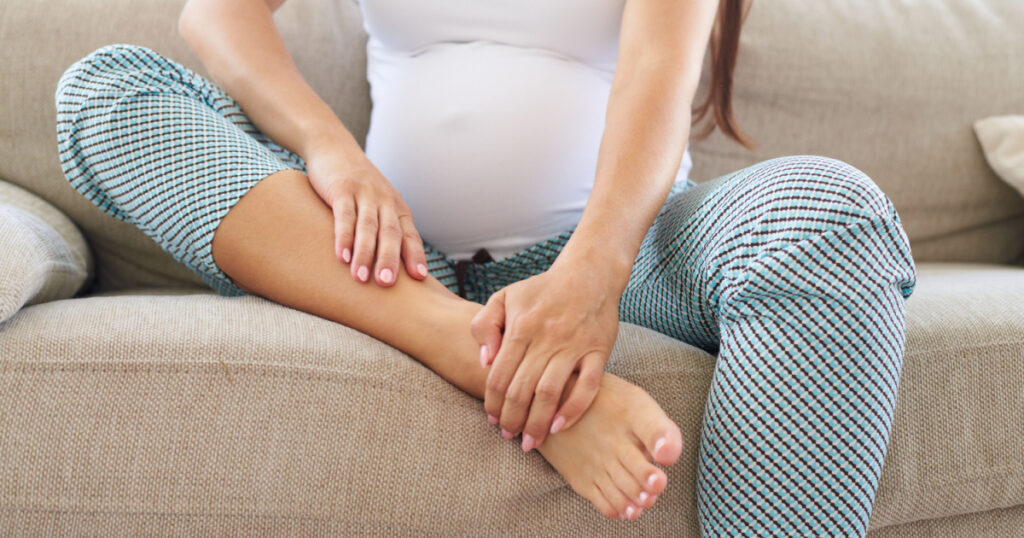
There are several reasons why pregnancy leads to swollen feet. The body retains more fluid during this period. Also, the belly adds weight to the pelvic floor, which puts pressure on the blood vessels in the legs. Finally, the pregnancy hormone called relaxin. It makes the pelvis relax and enlarge, but it also loosens the ligaments in the feet. A little swelling is normal and could be treated by exercise, proper hydration, and comfortable shoes. If the swelling increases and is followed by nausea, headaches, or blurred sigh, contact your doctor immediately. This could be a sign of a dangerous condition called preeclampsia. [2]
PMS

Hormonal changes can give some women headaches, mood swings, cramps, backaches, nausea, and other lovely effects. It also can cause fluid retention a week or two before the period begins. Exercise, hydration, and reducing sodium should fix the swelling in a few days. [5]
Extra weight
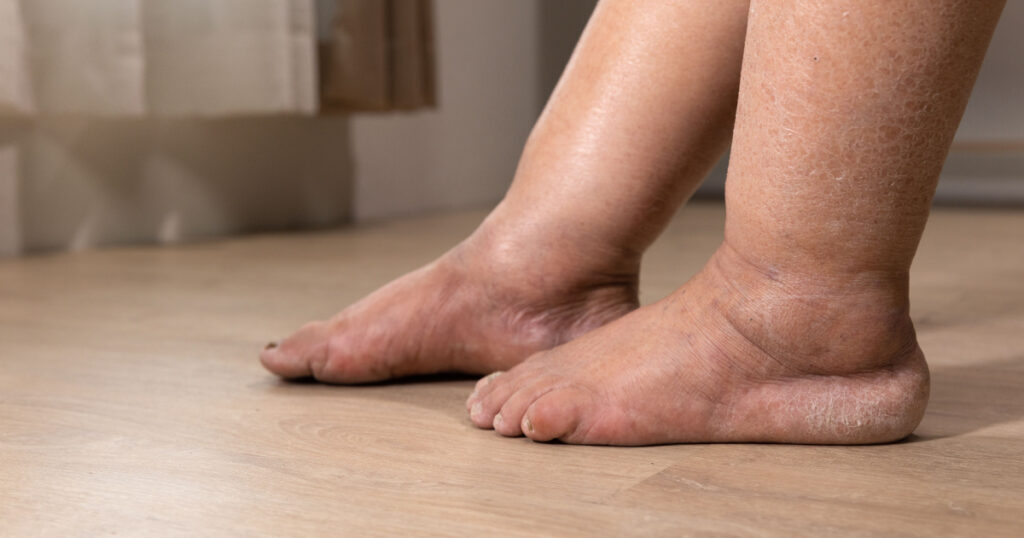
Similar to pregnancy, extra pounds of body weight can press on the legs’ blood vessels and enlarge the feet. “If you’re sitting a lot, that extra weight in your belly sits right on the groin area, and that can disrupt the lymphatic flow that drains fluid from your legs,” says Tonnessen. “But even losing just 10 or 20 pounds can make a difference.” [5]
Medication Side Effects
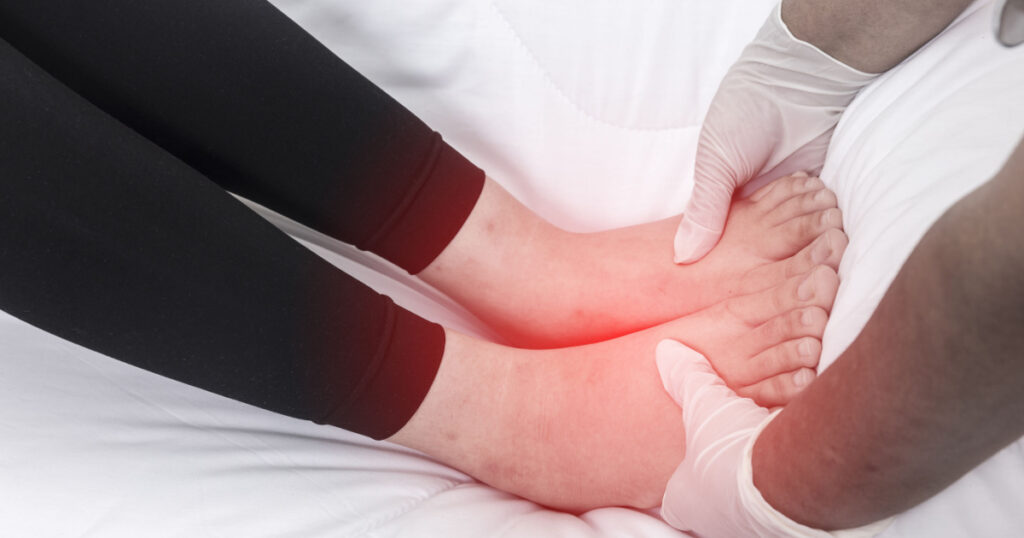
If you are trying new prescription drugs, such as oral contraceptives, steroids, antidepressants, and diabetes medications, they may cause fluid retention and therefore, swollen feet. Talk to your doctor if you think this might be true. However, if the medication is otherwise helping, it might be worth it to switch to comfortable flats instead of strappy sandals. [1]
Varicose veins
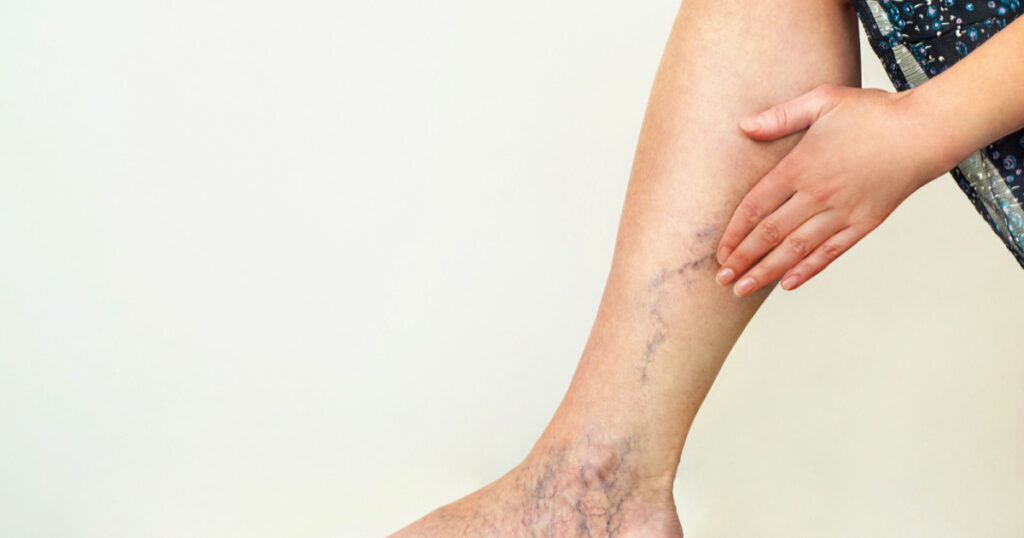
This condition occurs when the veins in the legs become weak and lose elasticity. The vein’s valves don’t work as well, affecting the blood flow back to the heart, causing the blood to pool and create the signature blue and red lines on the legs, and puffy feet and ankles. Compression socks, exercise, weight loss, and elevating your legs for 15 minutes throughout the day can help alleviate this condition. [6]
Read More: Yoga for Sciatica: 8 Poses in 8 Minutes for Back Pain Relief
Blood clot
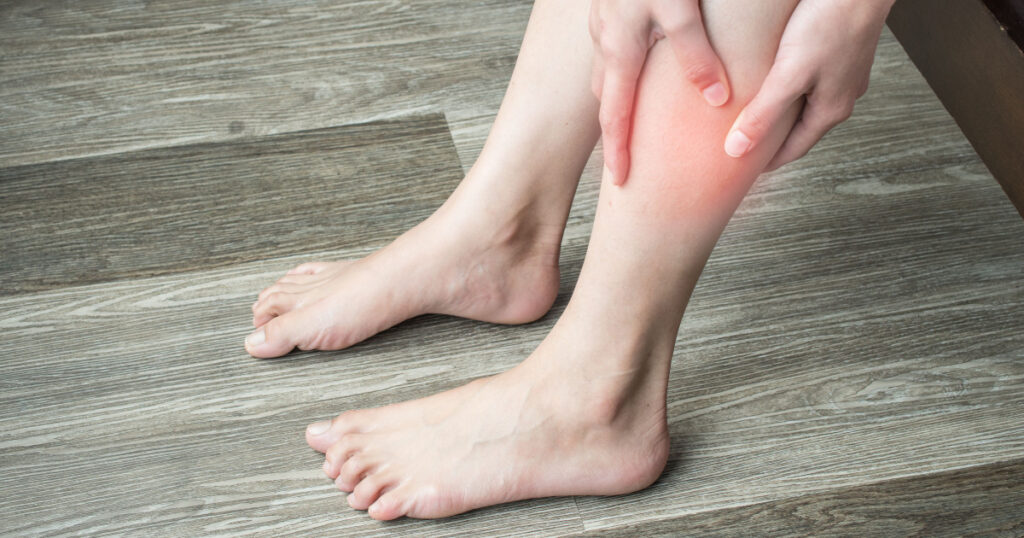
This is a more serious case. Leg swelling, both or usually one, can indicate a blood clot in the tissue, also called deep vein thrombosis (DVT). “This can happen at any age, and it typically happens after someone has been laid up after an injury or hospitalization, or after a long car ride or airplane flight,” says Dr. Tonnessen.
Symptoms that accompany the swelling may include
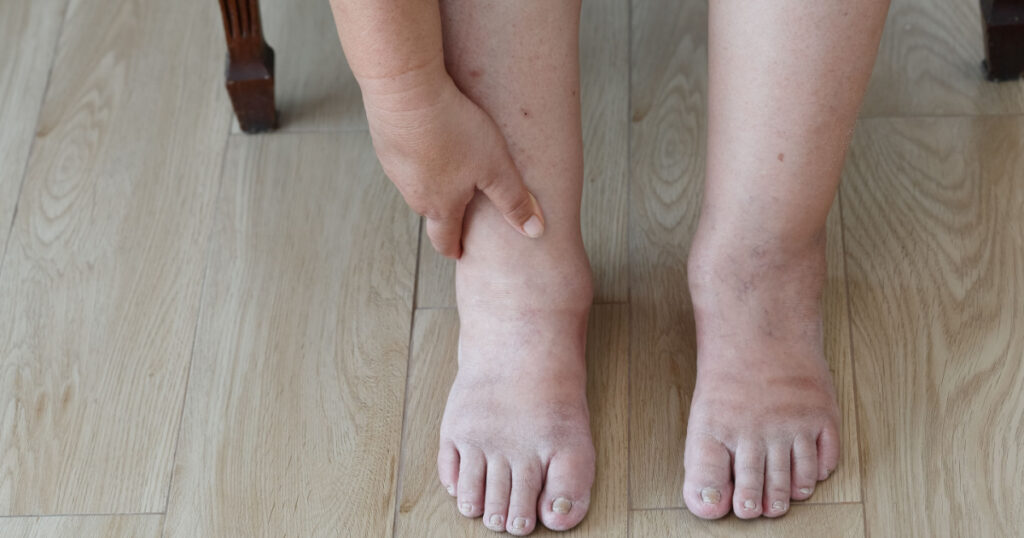
- pain
- tenderness
- a warm sensation
- redness or color change in the affected area
- fever
Diagnosis
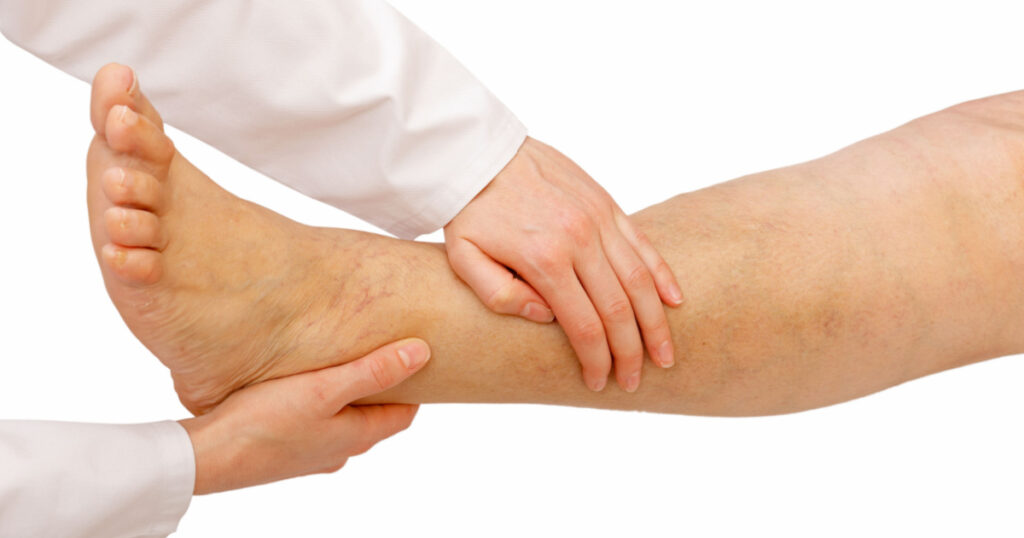
To diagnose these cases, doctors use ultrasounds and prescribe blood-thinning medications to keep the clot from affecting the brain, lungs, and heart. These cases are usually preventable by avoiding sitting for extended periods of time, exercising, and drinking enough water. [3]
Heart, Liver, or Kidney Disease
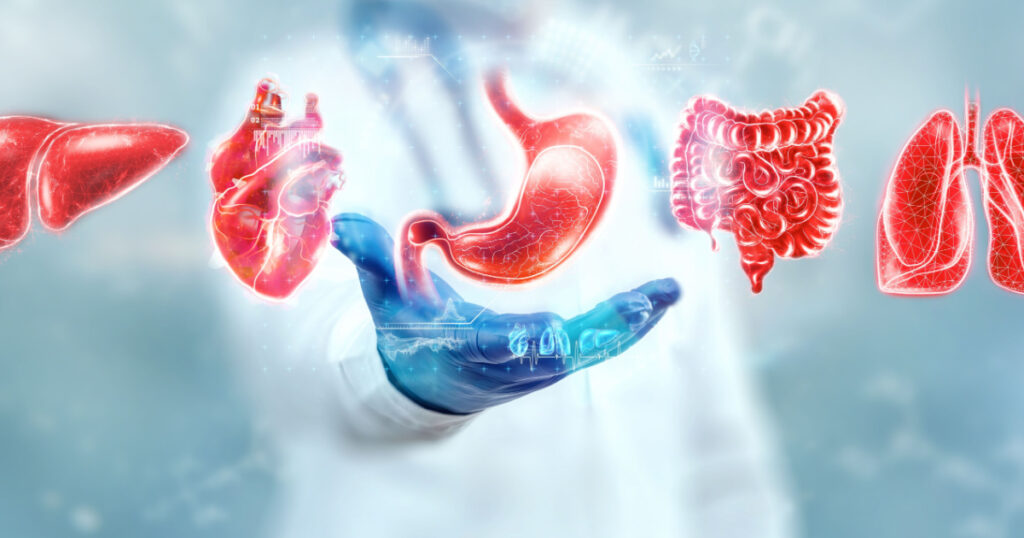
Swelling is often a condition that leaves on its own, but if it becomes steadily worse and is followed by other symptoms like weakness, nausea, vomiting, chest pain, shortness of breath, or pressure in the abdomen, it could be a heart, liver, or kidney disease. “Report your symptoms to your doctor if there’s so much swelling that it leaves an indentation if you press your finger into it, or if it has developed suddenly, lasts for more than a few days, affects just one foot, or is accompanied by pain or discoloration of the skin,” advises Dr. James Ioli, chief of podiatry services at Harvard-affiliated Brigham and Women’s Hospital and co-editor of the Harvard Special Health Report Healthy Feet. If this is the case, stay on the safe side and visit your health practitioner as soon as possible.
Read More: 10 Home Remedies for Joint Pain and Arthritis
Disclaimer: This information is not intended to be a substitute for professional medical advice, diagnosis or treatment and is for information only. Always seek the advice of your physician or other qualified health provider with any questions about your medical condition and/or current medication. Do not disregard professional medical advice or delay seeking advice or treatment because of something you have read here.
Sources
- Bethany Cadman. Why are my feet swollen? https://www.medicalnewstoday.com/articles/323265.php October 5, 2018
- Emily Cronkleton. What’s Causing My Swollen Feet?https://www.healthline.com/health/swollen-feet#see-a-doctor February 5, 2018
- NHS. Swollen ankles, feet and legshttps://www.nhs.uk/conditions/oedema/ November 14, 2018
- Gerhard Whitworth, RN. What Is Peripheral Edema and What Causes It?https://www.healthline.com/health/peripheral-edema#causes June 25, 2018
- NHS. Varicose veinshttps://www.nhs.uk/conditions/varicose-veins/ March 23, 2017
